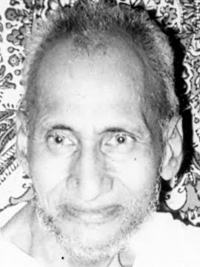20. Samyakcaritra Sutra
PRECEPTS ON RIGHT CONDUCT
(A) VYAVAHARA-CARITRA
Practical view-point
Vavaharanayacaritte, vavaharanayassa hodi tavacaranam.
Nicchayanayacaritte, tavacaranam hodi nicchayado. (262)Right Conduct from the practical view-point is to practice austerities from practical view point. Right Conduct from the real view-point is to observe austerities from the real view-point. (262)
Asuhado vinivitti, suhe pavitti ya jana carittam.
Vadasamidiguttiruvam, vavaharanaya du jinabhaniyam. (263)Know that Right Cunduct consists in desisting from inauspicious activity and engaging in auspicious activity. Jina has ordained that conduct from the practical point of view consists in the observance of vows, acts of carefulness (Samiti) and of control (gupti). (263)
Suyananammi vi jivo, vattamto so na paunati mokkham.
Jo tavasamjamamaie, joge na caei vodhum je. (264)A person, even possessing scriptural knowledge will not attain emancipation if he is not able to observe strictly the activities of austerity and self-control. (264)
Sakkiriyavirahato, icchitasampavayam na nanam ti.
Maggannu va cettho, vatavihino.dhava poto. (265)Though a person knows the right path yet fails to reach his destination due to inaction or absence of favourable wind for his boat(pota); similarly knowledge will not achieve the desired fruit in the absence of virtuous deeds. (265)
Subahum pi suyamahiyam kim kahii caranavippahinassa.
Amdhassa jaha palitta, divasayasahassakodi vi. (266)Just as a hundred-thousand-crore of lamps kept burning are of no use to a blind person, of what use is study of numerous scriptures to a person who has no character? (266)
Thovammi sikkhide jinai, bahusudam jo carittasampunno.
Jo puna carittahino, kim tassa sudena bahuena. (267)A person of right conduct triumphs over a learned person, even if his scriptural knowledge is little; what is the use of wide study of scriptures for a person without right conduct? (267)
(B) NISCAYA-CARITRA
Real view-point
Nicchayanayassa evam, appa appammi appane surado.
So hodi hu sucaritto, joi lahai nivvanam. (268)From the real point of view, he, who is blissfully absorbed in his own soul to know his soul with the aid of his soul, becomes a person of Right Conduct; that ascetic attains emancipation. (268)
Jam janiuna joi, paruharam kunai punnapavanam.
Tam carittam bhaniyam, aviyappam kammarahiehim. (269)An ascetic who eradicates his punya Karmas (merits) as well his Papa Karmas (sins) undoubtedly acpuires right conduct-this is said by those who are free from Karmas (i.e. the Jinas). (269)
Jo paradavvammi suham, asuham ragena kunadi jadi bhavam.
So sagacarittabhattho, paracariyacaro havadi jivo. (270)He who out of attachment develops a favourable or unfavourable attitude in respect of an alien object, renounces what constitutes his own conduct (i.e. Svabhava) and adopts what constitutes alien conduct (i.e. Vibhava). (270)
Jo savvasamgamukko naamano appanam sahavena.
Janadi passadi niyaaam, so sagacariyam caradi jivo. (271)He, who devoid of all attachment and withdrawing one.s mind from everything else, definitely knows and sees one.s soul in its own true nature, practises what constitutes one.s own conduct (i.e. Svabhava). (271)
Paramatthamhi du athido, jo kunadi tavam vadam ca dharei.
Tam savvam balatavam, balavada,m bimti savvanhu. (272)If one performs austerities (tapas) or observes vows (vratas) without fixed contemplation on the Supreme Self, the omniscients call all that childish austerity (balatapa) and childish vow (balavrata). (272)
Mase mase tu jo balo, kusaggenam tu bhumjae.
Na so sukkhayadhammassa, kalam agghai solasim. (273)One who eats once in a month through the tip of kusagrass does not attain even the sixteenth part of what constitutes religion well proclaimed. (273)
Carittam khalu dhammo, dhammo mjo so samo tti niddittho.
Mohakkhohavihino, parinamo appano hu samo. (274)Right Conduct is really what constitutes religion; it is said that religion is equanimity. Equanimity is that condition of the soul which is free from delusion and excitement. (274)
Samada taha majjhattham, suddho bhavo ya viyarayattam.
Taha carittam dhammo, sahavaarahana bhaniya. (275)Equanimity, tolerance, pure-thought, freedom from attachment and hatred, (Right) conduct, religion, devotion to one.s own self, all of these are said to be one and same. (275)
Suvididapayatthasutto, samjamatavamudo vigadarago.
Samano samasuhadukkho, bhanido suddhovaoo tti. (276)That monk, is said to possess pure consciousness (comprising darsana and Jnana) who has understood the real nature of the substances, is endowed with self-restraint and penance, is free from attachment and maintains equanimity (of mind) both in happiness and sorrow. (276)
Siddhassa ya samannam, bhaniyam suddhassa damsanam nanam.
Suddhassa ya nivvanam, so cciya siddho namo tassa. (277)Purity of faith and knowledge constitutes pure asecticism. Such pure soul attains liberation. He is the Siddha; to him, I pay my obeisance. (277)
Aisayamadasamuttham, visayatidam anovamamanamtam.
Avvucchinnam ca suham, suddhuvaogappasiddhanam. (278)The bliss of a liberated sould (Siddha), charactgerized by purity of consciousness, is born of the excellence of his soul, is beyond the reach of senses, is incomparable, inexhaustible, and indivisible. (278)
Jassa na vijjadi rago, doso moho va savvadavvesu.
Na.savadi suham asuham, samasuhadukkhassa bhikkhussa. (279)The monk who harbours on attachment, aversion or delusion in respect of anything whatsoever and who maintains equanimity of mind in pleasures and pains, does not cause an inflow of good or evil Karmas. (279)
(C) SAMANVAYA
Synthesis
Nicchaya sajjhasaruvam, saraya tasseva sahanam caranam.
Tamha do vi ya kamaso, padicchamanam pabujjheha. (280)Right Conduct from the real point of view is the ultimate goal; Conduct vitiated by attachment, i.e.
conduct from practical view point is only the means to attain it. Hence these two should be followed one after another. He who follows them gradually will attain intuitive knowledge. (280)Abbhamtarasodhie, bahirasodhi vi hodi niyamena.
Abbhamtra-dosena hu, kunadi naro bahire dose. (281)Invariable, internal impurity results in external impurity; due to his internal impurities man commits external blemishes. (281)
Madamanamayaloha-vivajjiyabhavo du bhavasuddhi tti.
Parikahiyam bhavvanam, loyaloyappadarisihim. (282)Those who have seen and known this world and the other (i.e. the Omniscinet Arhats) have preached to all (who are capable of getting release from the Karmas) that purity of mind can be achieved by those who free themselves from lust, conceit, delusion and greed. (282)
Catta pavarambham, samutthido va suhammi cariyamhi.
Na jahadi jadi mohadi, na lahadi so appagam suddham. (283)He who has acquired auspicious conduct after renouncing all sinful activities, cannot obtain purity of his soul, it he has not freed himself from delusion. (283)
Jaha va niruddham asuham, suhena suhamavi taheva suddhena.
Tamha ena kamena ya, joi jhaeu niyaadam. (284)Just as inaupicious thoughts are obstructed by auspicious conduct, auspicious conduct by pure conduct; hence pervforming these (latter two types of act) one after another let a yogin meditate on his own soul. (284)
Nicchayanayassa caranaya-vighae nanadamsanavaho.avi.
Vavaharassa u carane, hayammi bhayana hu sesanam. (285)If there si any damage from the real point of view in one.s Right Conduct, then there would be damage in Right Knowledge and Right Faith, but if there is any damage to right conduct from the empirical point of view then there may or may not be any defect in Right knowledge and Right Faith. (285)
Saddham nagaram kicca, tavasamvaramaggalam.
Khamtim niunapagaram, tiguttam duppadhamsayam.
Tavanarayajuttena, bhittunam kammakamcuyam.
Muni vigayasamgamo, bhavao parimuccae.(286 & 287)After building a citadel with his Right Faith, gate-bars with his austerities and self-control, strong ramparts with his forgiveness, invincible gaurds with his three controls (of mind, speech and action), a monk arms himself with a bow of his penance, pierces through the garb of his Karma, wins the battle and becomes liberated from this mundane worldly life. (286 & 287)
 Jinendra Varni
Jinendra Varni

